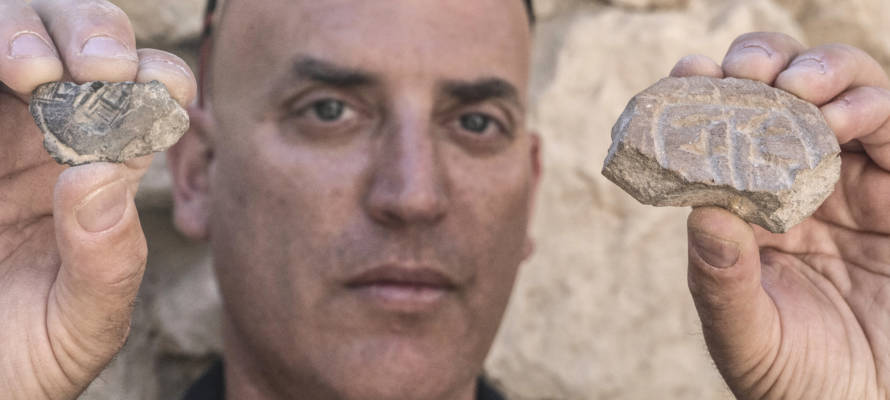Israeli archaeologists discovered a seal in Jerusalem that “bears witness to the restoration of the City of David in the period of Ezra and Nehemiah.”
By Ezra Stone, United with Israel
What was life like for the Jewish people after the destruction of the First Holy Temple in Jerusalem and the ensuing Babylonian exile?
A remarkable recent archaeological find in Jerusalem’s City of David is shedding light on this question, and experts believe it reflects the Jewish people’s resolve to reinstate key societal features that had been destroyed during the siege on the Holy City.
The find consists of “a double stamp impression on a bulla and a seal made of reused pottery sherds,” the Israel Antiquities Authority (IAA) announced in a statement.
The artifacts date back to the period during which the Jewish people began to return to the Land of Israel following the Babylonian exile (423 BCE – 372 BCE), a journey documented in the Book of Ezra, which is the last historical book in the Bible and relates the nation’s return to Zion.
The artifacts “were found next to the rubble of a large structure that was destroyed during the Babylonian destruction of Jerusalem … [and] may indicate that despite the plight of Jerusalem after the destruction of the First Temple, efforts were made to restore the stature of the administrative authorities,” the IAA statement continues.
“The impression depicts a man sitting on a large chair–probably a king–and in front of him columns,” adds the IAA.
The findings will be displayed on Wednesday during the Fifth Jerusalem Days Conference.
Defiance in the Face of Destruction
“Seal impressions–bullae–were small pieces of clay used in ancient times to sign documents or containers (for example, storage jugs for agricultural produce collected as a tax), and were intended to keep them sealed en route to their destination,” explains the IAA statement.
According to Tel Aviv University’s Prof. Yuval Gadot and the IAA’s Dr. Yiftah Shalev, “The finding of the stamp and seal impression in the City of David indicates that despite the city’s dire situation after the destruction, efforts were made to restore the administrative authorities to normal, and its residents continued to partly use the structures that were destroyed.”
Archaeologists discovered the double seal impression on a large clay piece (about 4.5 cm), indicating that it was used to seal a container, and not for signing documents.
“The imprint bears the image of a person sitting on a large chair with one or two columns in front of him. The design of the image is indicative of Babylonian-style composition,” continues the IAA statement.
According to Tel Aviv University’s Dr. Ido Koch, this is one of only about 10 artifacts of this style that have been discovered in Israel, with another similar bulla found in excavations overseen by Dr. Eilat Mazar on the City of David’s eastern slope.
The IAA’s Jerusalem Days conference featuring the artifacts will be broadcast live on Wednesay on the IAA and Yad Ben-Zvi websites.
